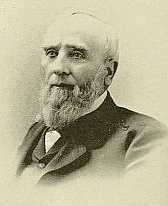Worthy S. Streator | |
|---|---|
 | |
| Member of the Ohio Senate from the 25th district | |
| In office 1870–1872 | |
| Preceded by | David A. Dangler |
| Succeeded by | Benjamin R. Bevis and Allen T. Brinsmade |
| Personal details | |
| Born | October 16, 1816 Hamilton, New York, U.S. |
| Died | March 6, 1902 (aged 85) Cleveland, Ohio U.S. |
| Resting place | Lake View Cemetery Cleveland, Ohio, U.S. |
| Political party | Republican |
| Spouse |
Sarah Wakeley Sterling
(m. 1839) |
| Relations | Ralph Plumb (cousin) |
| Children | 5 |
| Residence(s) | Cleveland, Ohio, U.S. |
| Occupation |
|
| Mayor | East Cleveland, Ohio[1]: appendix xxii |
| Signature | |
Worthy Stevens Streator (October 16, 1816 – March 6, 1902) was an American physician, railroad developer, industrialist and entrepreneur after whom the city of Streator, Illinois, is named. He was instrumental in the creation of the Atlantic and Great Western Railway in Ohio, was president of the Baltimore and Ohio Railroad (B&O), and financed the first large-scale coal mine operation in Northern Illinois in 1866. He served as an Ohio State Senator from 1870 to 1872, and was the first mayor of East Cleveland, Ohio.[1]: appendix xxii He was an influential in the development of many civic institutions in his home city of Cleveland, Ohio. He co-founded the Christian Standard magazine, he was an original endower of Case School of Applied Science and was a principal in the creation of the James A. Garfield Monument; the first true mausoleum created in the United States in honor of President James A. Garfield. He was a pallbearer at President Garfield's funeral in 1881.
- ^ a b Robison, W. Scott (1887). History of the City of Cleveland. Robison & Cockett. pp. 510. Retrieved 2008-11-10.